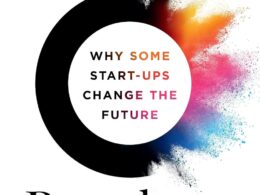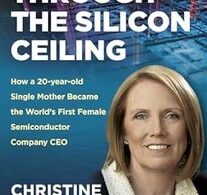The following is excerpted with permission from the publisher, Wiley, from “Rewired: The McKinsey Guide to Outcompeting in Digital and AI” by Eric Lamarre, Kate Smaje, Rodney Zemmel. Copyright © 2023 by McKinsey & Company. All rights reserved.
How to think about emerging technologies such as Generative AI
The fast-moving developments in technology create a unique challenge for digital transformations: How do you build an organization powered by technology when the technology itself is changing so quickly? There is a fine balance between incorporating technologies that can generate significant value and dissipating resources and focus chasing every promising technology that emerges.
McKinsey publishes annually on the more important emerging tech trends based on their capacity to drive innovation and their likely time to market. At the moment, the research identified tech trends that have the potential to revolutionize how businesses operate and generate value. While it remains difficult to predict how technology trends will play out, executives should be systematic in tracking their development and their implications on their business.
We want to highlight generative artificial intelligence (GenAI), which we believe has the potential to be a significant disruptor on the level of cloud or mobile. GenAI designates algorithms (such as GPT-4) that can be used to create new content, including audio, code, images, text, simulations, and videos. The technology uses data it has ingested and experiences (interactions with users that help it “learn” new information and what’s correct/incorrect) to generate entirely new content.
These are still early days, and we can expect this field to change rapidly over the next months and years. In assessing how to best use GenAI models, there are three application types:
- Broad functional models that will become adept at automating, accelerating and improving existing knowledge work (e.g., GPT-4, Google’s Chinchilla, Meta’s OPT). For example, marketers could leverage GenAI models to generate content at scale to fuel targeted digital marketing at scale. Customer service could be fully automated or optimized via a ‘knowledge sidekick’ monitoring conversation and prompting service reps. GenAI can rapidly develop and iterate on product prototypes and construction drawings.
- Industry-specific models that can not only accelerate existing processes but develop new products, services, and innovations. In pharma, for example, application models that use common techniques (e.g., OpenBIOML, BIO GPT) can be deployed to deliver speed and efficiency to drug development or patient diagnostics. Or a GenAI model can be applied to a massive pharma molecule database that can identify likely cancer cures. The impact potential and readiness of generative AI will vary significantly by industry and business case.
- Coding (e.g., Copilot, Alphacode, Pitchfork). These models promise to automate, accelerate, and democratize coding. Existing models are already able to competently write code, documentation, automatically generate or complete data tables, and test cybersecurity penetration – though significant and thorough testing is necessary to validate outcomes. At Davos in 2023, Satya Nadella shared an example that Tesla is already leveraging coding models to automate 80% of the code written for autonomous vehicles.
In the context of a digital transformation, it’s important to consider a few things when it comes to GenAI. First, any understanding of the value of GenAI models needs to be grounded on a clear understanding of your business goals. That might sound obvious, but as interest in GenAI surges, the temptation to develop use cases that don’t end up creating much value for the business or become a distraction from digital transformation efforts will be significant.
Secondly, like any technology, extracting at-scale value from GenAI requires strong competencies in all the capabilities covered in this book. That means developing a range of capabilities and skills in cloud, data engineering, and MLOps; and finding GenAI specialists and training people to use this new generation of capabilities.
Given this necessity, it will be important to revisit your digital transformation roadmap and review your prioritized digital solutions to determine how GenAI models can improve outcomes (e.g. content personalization, chatbot assistants to increase web site conversion). Resist the temptation of pilot proliferation. It’s fine to let people experiment, but the real resources should only be applied to areas with a real tie to business value. Take the time to understand the needs and implications of GenAI on the capabilities you’re developing as part of your digital transformation, such as:
Operating model: Dedicated, responsible GenAI-focused agile “pods” are required to ensure responsible development of and use of GenAI solutions. This will likely mean closer collaborations with legal, privacy and governance experts as well as with MLOps and testing experts to train and track models.
Technology architecture and delivery: System architecture will need to adapt to incorporate multimodal GenAI systems into end-to-end system flows. This represents a different level of complexity because this is not just an adaptation of a standard data exchange. There will need to be an evolution at multiple levels in the tech stack to ensure adequate integration and responsiveness in your digital solutions.
Data architecture: The application of GenAI models to your current data will require you to rethink your networking and pipeline management to account for not just the size of the data, but the massive change frequencies that we can expect as GenAI learns and evolves.
Adoption and business model changes: In almost any scenario, we can expect that GenAI will offer a partial activity substitution, not a complete one. We will still need developers. We will still need contact center employees. But their job will be reconfigured. That may be much more of a challenge than the technology itself, especially since there is a significant ‘explainability gap’ with GenAI models. This means that users are likely to not trust them and, therefore, not use them well (or at all). Retraining employees so they know how to manage and work with GenAI models will require substantial efforts to capture the promised productivity gains.
Digital Trust: GenAI represents significant trust concerns that companies need to identify. Given national data privacy regulations vary by maturity and restrictiveness, there remains a need for policies relating to usage of proprietary or sensitive information in third party services and accountability in situations of data breach. Similarly, companies will need to think through, and track, intellectual property developments (particularly around IP infringement) as well as biases that are likely to manifest through unrefined GenAI models.
Eric Lamarre, Kate Smaje, and Rodney Zemmel are Senior Partners at McKinsey and are members of McKinsey’s Shareholders Council, the firm’s board of directors. Eric and Rodney lead McKinsey Digital in North America, and Kate co-leads McKinsey Digital globally.







